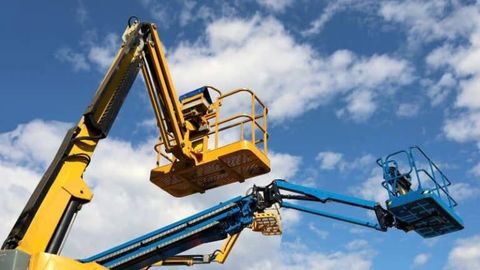Explore Reliable Material Hoist Suppliers: A Global Guide for Insights and Knowledge
Material hoists are essential lifting machines used in construction, manufacturing, and industrial sectors to move heavy materials vertically between floors or structures. Unlike passenger lifts, these are designed specifically for transporting materials, tools, and equipment efficiently and safely.
Their purpose is simple yet vital to improve productivity, reduce manual labor, and enhance workplace safety. Material hoists are commonly seen on construction sites, warehouses, and industrial plants where vertical lifting is required.
They are typically divided into electric, hydraulic, and rack-and-pinion systems, each suited to specific project needs. Electric hoists are known for energy efficiency and speed, hydraulic systems for their smooth operation, and rack-and-pinion hoists for heavy-duty construction use.
The Importance of Reliable Material Hoist Suppliers
Reliable material hoist suppliers play a key role in ensuring the efficiency and safety of lifting operations. Choosing the right supplier means access to high-quality equipment, compliance with safety standards, and reliable technical support.
Today, as construction and industrial projects become larger and more complex, the demand for advanced lifting technology is growing. According to Global Construction Review (2024), the construction equipment industry is projected to expand steadily through 2025, driven by infrastructure development in Asia, the Middle East, and North America.
Reliable suppliers help reduce downtime, ensure smooth logistics, and comply with safety laws all critical in high-risk environments like construction sites. Their expertise also helps companies stay aligned with ISO 9001 quality standards and local safety regulations.
Industries impacted include:
-
Construction – for transporting concrete, steel, and heavy materials.
-
Manufacturing – for moving raw materials and components efficiently.
-
Warehousing and logistics – for optimizing vertical storage and handling.
-
Mining and energy sectors – for lifting equipment and tools safely in rugged conditions.
Recent Updates and Industry Trends
The material hoist market has experienced notable growth and innovation in the last few years. Here are some key developments and trends observed in 2024–2025:
-
Automation and Remote Monitoring: Suppliers are introducing hoists with integrated IoT sensors for real-time performance tracking and predictive maintenance.
-
Eco-Friendly Systems: Electric and energy-efficient hoists are replacing diesel-powered ones, reducing carbon emissions and noise pollution.
-
Safety Enhancements: Updated fall protection systems and anti-slip platforms became standard features in 2024 under various construction safety codes.
-
Global Market Growth: A report by Market Research Future (2025) estimated the global material hoist market to grow at a CAGR of 4.8% through 2030, driven by smart city projects and large-scale construction developments.
-
Localization of Supply Chains: To reduce import delays and costs, many countries are encouraging local manufacturing and partnerships with global brands.
Table: Emerging Material Hoist Trends (2024–2025)
| Trend | Description | Impact |
|---|---|---|
| IoT Integration | Remote monitoring and performance analytics | Increased safety and uptime |
| Sustainable Design | Electric hoists with energy-saving motors | Lower emissions |
| Modular Systems | Easy assembly and dismantling | Greater flexibility |
| Local Production | Manufacturing closer to demand | Reduced logistics time |
| Advanced Safety Standards | New compliance checks and certifications | Enhanced site security |
Legal Frameworks, Standards, and Regulations
Material hoists operate under strict safety and engineering guidelines in most countries. Regulatory compliance ensures equipment reliability and worker protection. Some key frameworks include:
-
OSHA (Occupational Safety and Health Administration – USA): Sets specific guidelines for material hoist installation and operation, requiring regular inspection and certification.
-
CE and ISO Certifications (Europe & Global): Products must meet European Conformity (CE) standards for machinery safety and environmental compliance.
-
BIS Standards (India): The Bureau of Indian Standards regulates design, construction, and performance of lifting equipment under IS 14665.
-
EN 12158-1:2010 (EU): Defines safety requirements for builder’s hoists used for goods transport.
-
Local Building Codes: Many municipalities require permits and safety audits before hoist installation or operation.
Governments are also promoting safe construction practices through digital tracking systems and operator training programs. For instance, India’s National Safety Council (2024) introduced new certification courses for hoist operators and supervisors to reduce accidents on construction sites.
Tools, Resources, and Helpful Platforms
For those researching, selecting, or comparing material hoist suppliers, several tools and resources can simplify decision-making:
Technical Resources:
-
Engineering Toolbox: Provides load capacity charts and motor efficiency calculators.
-
Machinery Directive Database (EU): Lists compliant equipment and manufacturers.
-
OSHA Construction Safety Guides: Free digital handbooks covering hoist operation safety.
Industry Directories:
-
ThomasNet – Lists verified material hoist manufacturers and distributors globally.
-
IndiaMART – A comprehensive marketplace for local and international hoist suppliers.
-
GlobalSpec – Provides detailed technical data on hoist systems and industrial machinery.
Design and Calculation Tools:
-
LiftPlanner – An online tool for visualizing hoist configurations and capacities.
-
Hoist Load Calculator – Used to estimate the correct lifting capacity and motor requirements.
Training and Knowledge Sources:
-
Construction Equipment Association (CEA): Offers certification programs and global market insights.
-
YouTube Channels (e.g., The B1M): Provide visual guides on modern construction equipment and safety systems.
These resources help professionals and businesses make informed decisions, comply with legal standards, and stay updated with new technologies.
FAQs
1. What is the difference between a material hoist and a construction elevator?
A material hoist is designed solely for lifting goods and equipment, while construction elevators (also known as personnel hoists) are built to safely carry workers as well as materials.
2. How often should a material hoist be inspected?
Regulations typically require inspection before each shift and a certified inspection every 90 days or as per the manufacturer’s manual and local laws.
3. Which type of material hoist is best for tall buildings?
Rack-and-pinion hoists are most suitable for tall structures due to their high load capacity, stability, and smooth vertical movement.
4. Are electric hoists environmentally friendly?
Yes. Electric hoists produce zero on-site emissions and are significantly quieter and more energy-efficient than diesel-powered systems.
5. How can one ensure supplier reliability?
Always verify supplier credentials, ISO or CE certifications, past project experience, and after-sales technical support availability.
Conclusion
Reliable material hoist suppliers form the backbone of modern industrial and construction progress. Their equipment ensures efficiency, safety, and compliance across projects worldwide.
As industries continue to prioritize sustainability, digital monitoring, and localized production, the material hoist market is evolving to meet global safety and environmental expectations. Whether for large-scale infrastructure projects or smaller construction sites, understanding the latest trends, legal frameworks, and trusted resources empowers professionals to make well-informed decisions.
A dependable material hoist supplier is not just a vendor it’s a partner in progress, supporting safer, smarter, and more efficient lifting operations for the future.





